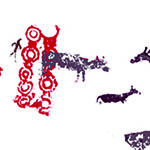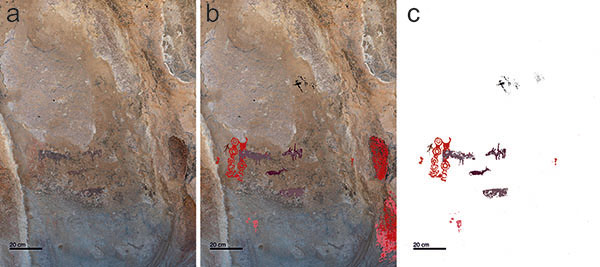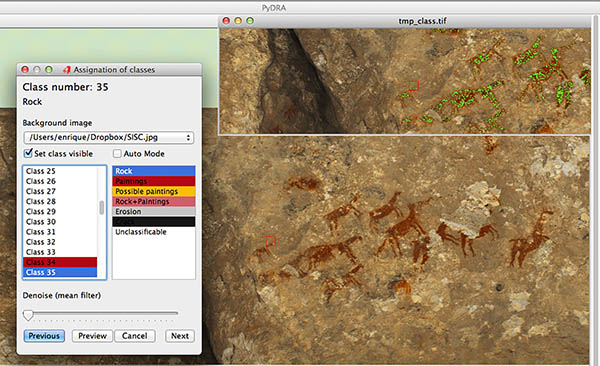[CAA 2015 – session 3C abstract]
The digital recording of rock art has benefited of an increasing number of software solutions, mostly photogrammetry and the enhancement of pigments from photographs. During the last years we have utilized open source scientific libraries for enhance pigments in a currently under development software code named PyDRA…
by Enrique CERRILLO-CUENCA, Marcela SEPÚLVEDA
 43rd International Conference on Computer Applications
43rd International Conference on Computer Applications
and Quantitative Methods in Archaeology (CAA 2015)
Session 3C: Computer and rock art studies:
data collection, interpretation and communication
[March 31 2015, Siena] – abstract
Photographic recording and the digital enhancement of pigments: recent applications
in the rock art of Northern Chile
The digital recording of rock art has benefited of an increasing number of software solutions, mostly photogrammetry and the enhancement of pigments from photographs. Regarding to this last field, we have assisted in the last decade to two different trends: the popularization of DStretch software and the application of advanced statistical methods through specialized software, which is not suitable for all the archaeologists.
During the last years (Cerrillo et al. 2014) we have utilized open source scientific libraries for enhance pigments in a currently under development software code named PyDRA. PyDRA is composed of a graphical user interface (GUI) and the implementation of several statistical processes for the enhancement of pigments. The aims of these statistical procedures are:
- the enhancement of pigments in the image through Principal Components Analysis (PCA) and Decorrelation Stretch algorithm (DS);
- the creation of tracings for enhanced images by classification algorithms like K-means.
The results are tracings (binary images) that can be superimposed for creating complex compositions. The main advantage is the detailed scientific documentation of the procedures, which makes this solution robust from the point of view of its scientific application.
In this paper we present the results of the application of PyDRA to a join of rock art sites from the precordillera of Arica, Northern Chile (Sepúlveda 2011), which cover a wide chronological span from the Archaic Period (8500 cal BP) to the beginnings of Spanish colonial period. The results have shown that the combination of classification and enhancement techniques can provide clear tracings, especially for washed and deteriorated paintings. This approach is leading to a systematic recording of archaeological sites, boosted by the “replication” of procedures in PyDRA.
Enrique CERRILLO-CUENCA, Marcela SEPÚLVEDA
References
Cerrillo-Cuenca, E., Ortiz-Coder, Martínez-del-Pozo, J.A., 2014. Computer vision methods and rock art: towards a digital detection of pigments. Archaeol. Anthropol. Sci. 6: 227-239
Sepúlveda, M., 2011. La tradition naturaliste des peintures rupestres des groupes de chasseurs-cueilleurs de l‘extrême nord du Chili, in Vialou, D. (Ed.): Peuplements et prehistoire en Amériques. Documents Préhistoriques 28. Comit des Travaux Historiques et Scientifiques. Paris, pp. 447-459.

















Leave a Reply